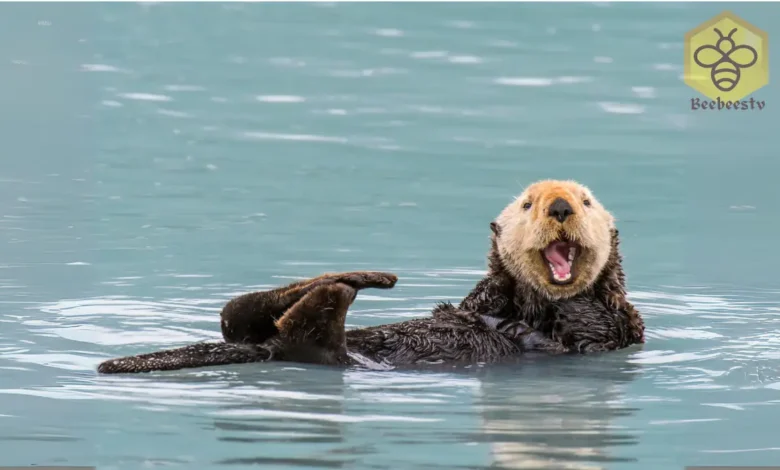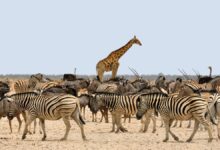Otters: Playful Guardians of Aquatic Ecosystems

Otter: Playful Guardian of Aquatic Ecosystems
Otter: Classification, Characteristics, Habitat, Facts, and More…
Introduction
Otters are fascinating, semi-aquatic mammals that capture the hearts of many with their playful behavior, intelligence, and charming appearance. As crucial components of freshwater and coastal ecosystems, otters help maintain balance by controlling prey populations and contributing to the health of aquatic environments.
Scientific Name
The scientific name of the most well-known species, the river otter, is Lontra canadensis. Otters belong to the family Mustelidae, which also includes weasels, badgers, and wolverines.
Common Name
Otters are commonly referred to simply as “otters,” though depending on their habitat, they are also known by species-specific names such as the river otter, sea otter, or giant otter.
Scientific Classification
| Kingdom | Animalia |
| Phylum | Chordata |
| Class | Mammalia |
| Order | Carnivora |
| Family | Mustelidae |
| Genus | Lontra, Enhydra, Pteronura (among others) |
| Species | Over 13 species |
Types of Otters
There are 13 species of otters globally, with the following being the most notable:
- North American River Otter (Lontra canadensis): Found throughout the waterways of North America, this species is known for its playful behavior and adaptability to both fresh and brackish waters.
- Sea Otter (Enhydra lutris): Native to the northern Pacific, the sea otter is unique for its ability to live almost entirely in marine environments.
- Giant Otter (Pteronura brasiliensis): The largest otter species, found in the rivers and lakes of the Amazon Basin in South America.
- Eurasian Otter (Lutra lutra): Widely distributed across Europe and Asia, inhabiting freshwater rivers, lakes, and coastal areas.
Habitat
Otters are highly adaptable mammals, living in a wide range of aquatic habitats, including rivers, lakes, marshes, estuaries, and coastal regions. River otters, for example, are commonly found in freshwater environments such as rivers, streams, lakes, and ponds. Sea otters, on the other hand, live primarily in coastal waters, particularly in kelp forests where they feed and take shelter.
Otters need clean water with an abundant supply of prey, such as fish and invertebrates. They create dens, called holts, in riverbanks, tree roots, or under rocks to rest and raise their young. While most otter species prefer freshwater habitats, sea otters spend almost their entire lives in the ocean.
Physical Characteristics
Otters have several physical traits that make them well-suited to their aquatic lifestyle:
- Size: Otter species vary in size. The smallest, the Asian small-clawed otter, weighs around 6 pounds, while the giant otter can reach up to 70 pounds and 6 feet in length.
- Fur: Otters are known for their thick, water-repellent fur. Sea otters, in particular, have the densest fur of any animal, with around 1 million hair follicles per square inch. This fur traps air and provides insulation in cold water.
- Body Shape: Otters have long, streamlined bodies and webbed feet, allowing them to swim swiftly through water. They also possess strong tails, which act as rudders to help with steering.
- Eyes and Ears: Positioned on top of their heads, otters’ eyes and ears allow them to remain mostly submerged while staying alert to their surroundings.
Diet
Otters are carnivores, and their diet consists mainly of fish, though they also eat other aquatic animals such as amphibians, crustaceans, mollusks, and small mammals. Sea otters are known for their use of tools—often rocks—to crack open shellfish such as clams and sea urchins.
- River Otters: Primarily fish, crayfish, frogs, and small mammals.
- Sea Otters: Shellfish, crabs, sea urchins, fish, and occasionally seabirds.
- Giant Otters: Fish, including piranhas, and small caimans.

Predators and Threats
While otters are near the top of the food chain, they still face various predators, particularly when they are young or vulnerable. River otters may be preyed upon by coyotes, wolves, bobcats, and birds of prey. Sea otters face threats from orcas, sharks, and bald eagles (which prey on pups). Giant otters in South America must contend with jaguars and caimans.
However, the greatest threats to otters are human-related. Habitat loss due to pollution, damming of rivers, and deforestation has significantly impacted otter populations. Poaching for their fur, particularly in the past, decimated many species, especially the sea otter. Oil spills, climate change, and bycatch in fishing nets are additional human-caused threats that continue to affect otter populations today.
Reproduction, Babies, and Lifespan
Otters are generally solitary, except during the breeding season or when females are raising their young. Mating usually takes place in the water, and gestation lasts anywhere from two to five months, depending on the species. Female otters give birth to 1–6 pups, with the number varying by species.
Otter pups are born blind and helpless, requiring care and nursing for several months. In river otters, mothers teach their young to swim at about two months old. Sea otter pups are born with buoyant fur that keeps them afloat while their mother hunts for food.
- Lifespan: Otters live around 8–12 years in the wild, though some can live longer in captivity.
Population
Otter populations vary widely depending on the species. While some, like the North American river otter, have relatively stable populations due to successful conservation efforts, others, like the sea otter, have faced sharp declines due to habitat destruction, hunting, and environmental changes.
The sea otter population has rebounded somewhat in recent years thanks to conservation efforts, but they are still considered endangered. Similarly, the giant otter is listed as endangered due to habitat loss in the Amazon Basin.
Behavior and Lifestyle
Otters are known for their playful behavior. They engage in activities such as sliding down muddy banks or snow slopes, play wrestling with other otters, and playing with objects like pebbles. This playfulness is not only fun but also crucial for developing survival skills, especially in young otters.
- Communication: Otters communicate through vocalizations such as whistles, chirps, and growls. They also use scent-marking to establish territory.
- Social Structure: Most otter species are solitary or form small family groups, though sea otters can gather in large “rafts” while resting or feeding.
Ecological Role
Otters play a vital role in their ecosystems by controlling prey populations. Sea otters, for instance, are a keystone species in coastal ecosystems like kelp forests. By preying on sea urchins, they prevent these creatures from overgrazing and destroying kelp forests, which serve as important habitats for a wide range of marine species.
River otters help maintain healthy fish populations in freshwater ecosystems, preventing overpopulation and keeping aquatic environments in balance.
FAQs
- What do otters eat?
- Otters primarily eat fish, but they also consume crustaceans, mollusks, amphibians, and small mammals, depending on the species.
- Are otters endangered?
- Some otter species, like the sea otter and giant otter, are endangered due to habitat loss, hunting, and environmental threats. Others, like the North American river otter, have stable populations thanks to conservation efforts.
- How long do otters live?
- In the wild, otters typically live 8–12 years, though some species may live longer in captivity.
- Can otters live in saltwater?
- Yes, sea otters live almost exclusively in marine environments, particularly in kelp forests along the Pacific coast.
Conclusion
Otters are extraordinary animals with a unique blend of playful behavior, intelligence, and adaptability. Their ability to thrive in freshwater and marine environments makes them key players in maintaining the balance of ecosystems. Despite threats from predators and human activities, otters have become symbols of conservation success in some regions. Continued efforts to protect their habitats and reduce human-caused threats are essential for ensuring the survival of these remarkable creatures for generations to come.


